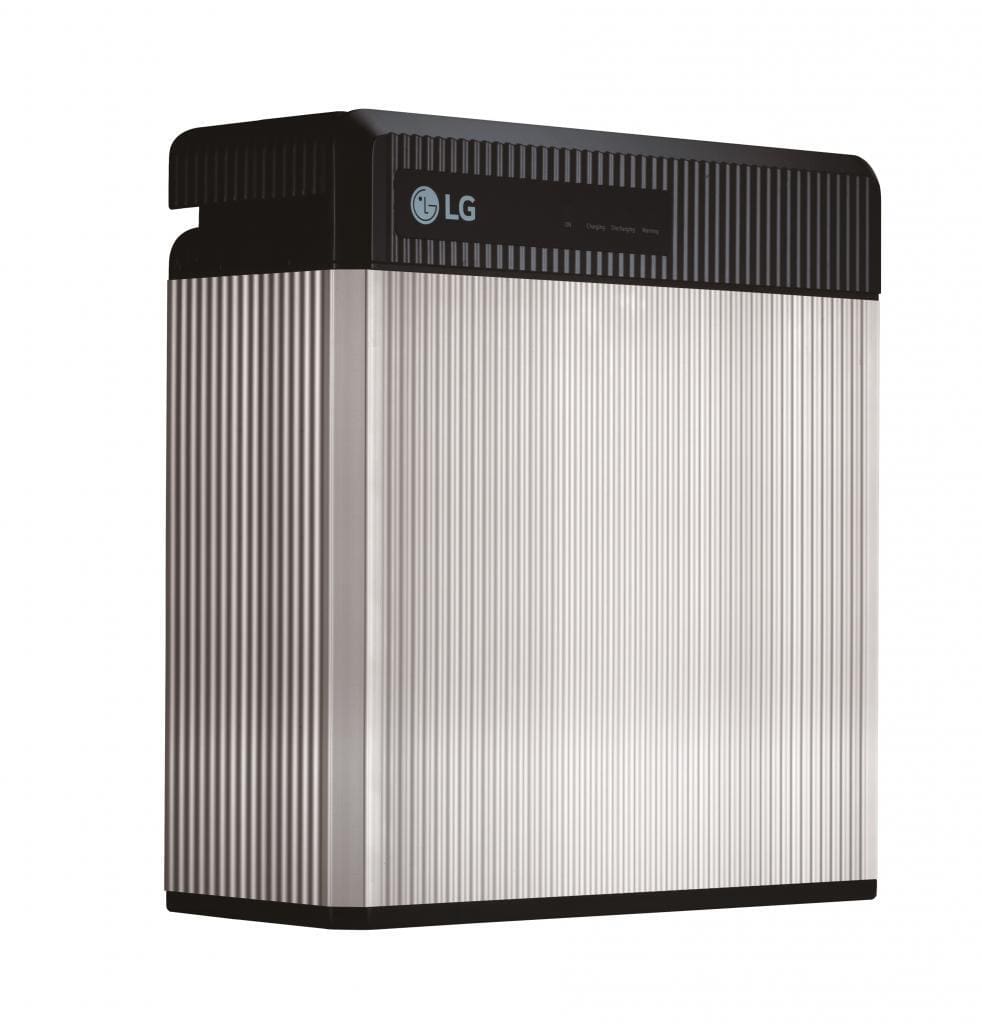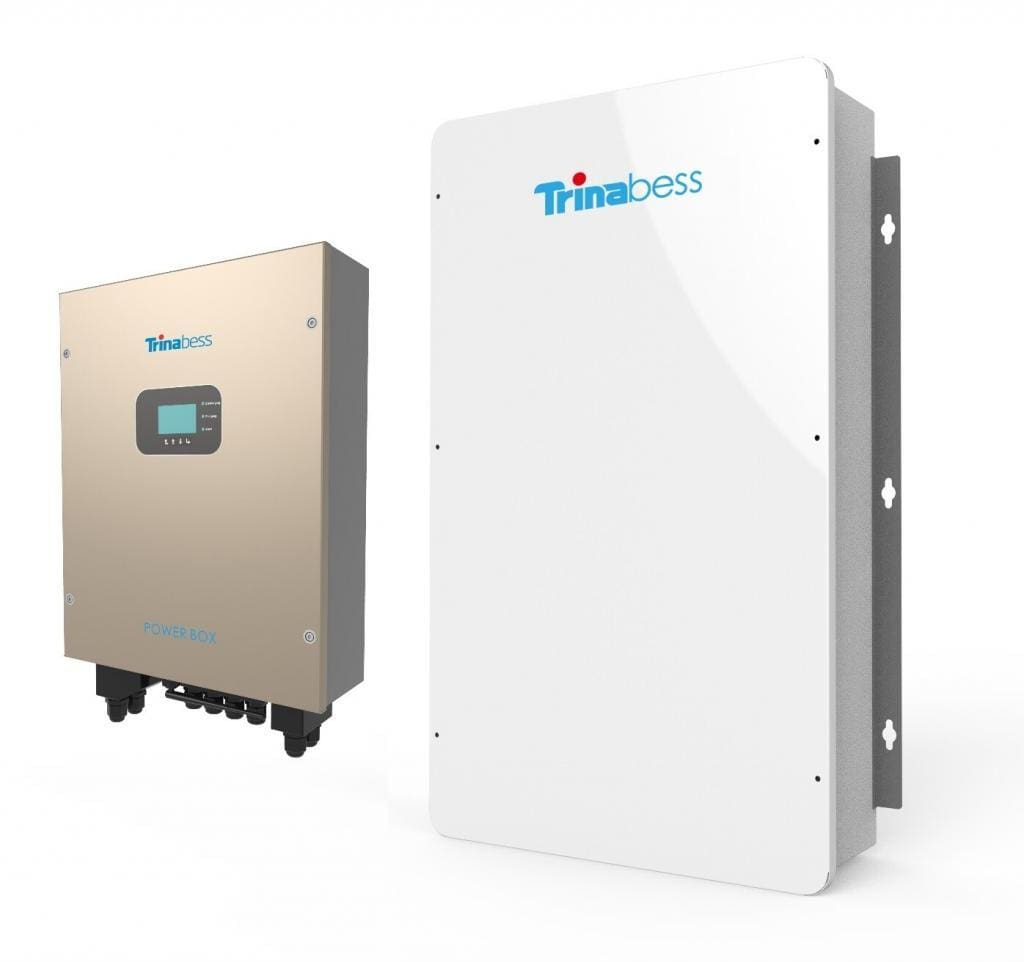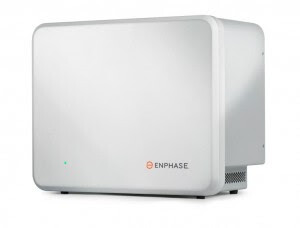We recently published an article containing a number of example case studies about retrofitting solar battery storage in Sydney. This time around we’ll be taking a look at the case for retrofitting batteries in sunny Brisbane.
In addition to the fact that Brisbane gets more sun, the circumstances around retrofitting batteries in Brisbane – and Queensland more broadly – are a bit different from those that characterise the situation in Sydney & NSW (detailed below). We’ve chosen our case study scenarios accordingly.
Are you receiving the QLD 44c Solar Bonus feed-in tariff? Don’t get batteries!
Firstly, while there are lots of households with smaller systems (3kW or less) in Brisbane just as there are in Sydney, many of these small system owners are still receiving solar feed-in payments under Queensland’s generous Solar Bonus Scheme (the NSW program expired at the end of 2016).
For these households, adding batteries is – quite frankly – a bad idea, as the solar energy their systems generate is worth more to them (at least 44c/kWh) if it is fed into the grid as opposed to being ‘self-consumed‘, which would save them about 22-25c/kWh. This means that instead of putting their solar energy into batteries, they should be aiming to put as much of it into the grid as possible. (Or maybe considering a partial off-grid system.)
Other situations – Moving into a solar home or installing solar anew
That being said, the Solar Bonus benefit does not change hands to the new owner when a home is sold. Australians move house on average about every 7 years, so there’s a decent chance that lots of Queenslanders are now living in homes that had solar on the roof before they moved in – but without the feed-in tariff benefit. That means that they’re essentially in the same situation as anyone who has had solar panels installed after the scheme closed to new applicants in August 2012.
By that point, solar system prices had already come down significantly compared to previous years, meaning that the average system size was getting larger. All in all, if you live in a solar home in Brisbane and you’re looking into batteries, there’s a decent chance that you’ve already got a decent size solar system (4kW or more) on your roof, putting you in a fairly good position to consider adding batteries if you’ve got the budget and have decided that they’re worth your while. We generally recommend that only homes with at least a 5kW solar system think about putting on battery storage.
Example battery retrofit scenarios for Brisbane
Everyone’s circumstances will differ, but there are a few common situations worth investigating. We’ve covered a handful in the case studies below – but keep in mind that the best solution for you will depend on your situation & budget.
Click to expand to see assumptions used in these scenarios ▼
Compare solar & battery quotes from installers in your area
Compare Solar & Battery Quotes
The results in a nutshell
In all but 1 of the 5 cases we examined below (‘Scenario A’), the payback period for the battery solution being examined was over 10 years, which is longer than the warranty period. Similarly, the internal rate of return (IRR) and net present value (NPV) figures were in the negative for all except the first scenario.
If you want to reduce your electricity bills and increase your home’s energy independence, batteries will help you achieve these goals – but battery prices still need to come down a bit before they’re a ‘no brainer’ long-term investment.
The situation does look a better for new solar+storage combo systems: when you think of the two as a single investment in your home’s energy infrastructure it’s easier to examine their collective total benefit (see our recent article here). That being said, most of the ‘heavy lifting’ in these systems is done by the solar panels, and not the batteries, so make sure you understand what you’re getting into before deciding on a battery system.
|
Tariff type
|
Payback periods by example situation (years) | ||||
| Situation A / 5kW solar & LG Chem RESU10 | Situation B / 3kW solar & Enphase AC Battery x3 | Situation C / 5kW solar & GCL Poly E-Kwebe | Situation D / 5kW solar & Tesla Powerwall 2 | Situation E / 4kW solar & Trina BESS | |
| Flat rate | 9.5 | >20 | >20 | >20 | >20 |
| Time of use | 8.5 | 18 | >20 | 12.9 | >20 |
The best situations for battery storage at the moment involve hybrid inverters, which handle both the solar and the batteries. In particular:
- Upgrades to an existing solar system where an inverter replacement was necessary (old inverter can be replaced with a battery-compatible hybrid) – having the double-duty hybrid inverter means that batteries can generally be installed at a lower price (although product options may be limited)
- New solar-plus-battery systems that use a hybrid inverter instead of two separate battery inverters
- Adding batteries to solar systems with an existing battery-ready inverter (which again usually means that batteries can be installed at a lower price)
Some alternatives to battery storage include hot water / solar diverters and energy management systems (to help households move more electricity consumption to inside the ‘solar window’).
Scenario A: Existing 3kW solar system – Replace inverter, add 2kW solar & LG Chem RESU10 battery (8.8kWh usable capacity)

Let’s say you’ve recently moved into a house with an existing 3kW solar system on the roof – a modestly-sized system compared to today’s national average of about 5kW.
With these points in mind, you decide to:
- Add 2kW of solar & replace existing inverter with a battery-compatible ‘hybrid’ inverter (total estimated cost of $4,000)
- Add an LG Chem RESU10 battery bank with usable capacity of 8.8kWh and a 10-year warranty (estimated cost of $8,000)
Results¤:
| TOU | ||||
| Estimated saving (first year) | Payback period | IRR | NPV @20yrs | |
| Battery only | $960 | 8.5 years | 8% | $1,250 |
| Solar & battery combined | $1,700 | – | – | – |
| Solar only | $756 | – | – | – |
| Flat rate | ||||
| Estimated saving (first year) | Payback period | IRR | NPV @20yrs | |
| Battery only | $840 | 9.5 years | 5% | 100 |
| Solar & battery combined | $1,600 | – | – | – |
| Solar only | $759 | – | – | – |
Estimated solar usage & energy source stats for first year (5kW solar & LG Chem RESU10)
Thoughts & comments:
This scenario is the best one that we came across in our analysis for this article. Basically, the value offered by the addition of the solar system is substantial, and would allow the system owner to ‘double up’ on inverter costs: Instead of paying for a separate inverter dedicated to the battery, the solar hybrid inverter also manages the batteries.
This allows the ‘battery only’ payback period (i.e. the payback period that takes into account only the costs & benefits of the battery & not the direct benefits that the solar provides) to come in at under 10 years for both customers on both time-of-use and flat rate tariffs.
The savings afforded by the batteries are also close to those provided by direct solar self-consumption and feed-in tariff revenues. If the battery price were just a bit lower (possible with a bit of negotiating?), the system could end up looking considerably more attractive. On top of this, we should keep in mind that the ‘energy awareness factor‘ could help the homes who install a battery to make these numbers even better in real life.
Scenario B: Add 3.6 kWh Enphase AC Batteries to an existing 3kW system (no inverter replacement)
Now let’s assume that you’ve got a 3kW solar system already up on your roof and you want to add a small battery bank. Because your system is relatively new (only 2-3 years old), it doesn’t appear to make sense to swap out your fully operational, still-warrantied inverter – so you opt instead to install 3x of Enphase’s modular AC Battery units, each of which has its own integrated inverter. The estimated price for full installation is $6,000 for a total usable capacity of 3.6kWh.
Results¤:
| TOU | ||||
| Estimated saving (first year) | Payback period | IRR | NPV @20yrs | |
| Battery only | $280 | 18 | 2% | -$1,660 |
| Solar & battery combined | $980 | – | – | – |
| Solar only | $706 | – | – | – |
| Flat rate | ||||
| Estimated saving (first year) | Payback period | IRR | NPV @20yrs | |
| Battery only | $230 | >20 | 0% | -$2,440 |
| Solar & battery combined | $940 | – | – | – |
| Solar only | $712 | – | – | – |
Estimated solar usage & energy source stats for first year (3kW solar & 3.6kWh of Enphase AC Battery capacity)
Thoughts & comments:
While Enphase’s AC Batteries can reasonably be expected to continue operating beyond their 10 year warranty based on their high cycle life (7,000 cycles possible under warranty over 10 years), in reality it’s a bit tricker to see the case pan out favourably in the short-term due to the high up-front cost for a relatively small amount of storage capacity. Conditions might look a bit better if households on time of use (TOU) billing manage to use their batteries both in the mornings and the evenings (see: Tariff arbitrage) – and in fact, this is what Enphase recommends that its battery customers do to maximise their returns. That being said, we’re only examining a simple ‘solar charging only’ scenario here, as pre-charging with off-peak electricity can be complicated.
 Scenario C: Add GCL Poly E-Kwebe battery bank (& second inverter) to existing 5kW solar system
Scenario C: Add GCL Poly E-Kwebe battery bank (& second inverter) to existing 5kW solar system
Let’s now assume that you have a 5kW solar system installed only about two years ago and that you’re keen to add a small battery bank to store some of your excess energy.
In this example we’ll use one of the most cost-competitive options on the market – GCL Poly’s E-KwBe – 4.5kWh of usable storage capacity with a 7 year warranty (one of the shortest of the lithium products currently available on the market). We’ll assume that you want to retain your existing inverter (which still has at least three more warrantied years of operation ahead of it) and install a dedicated inverter/charger for your new battery bank for a total installed cost of $6,700 ($4,500 for the battery plus about $2,200 for the inverter).
Results¤:
| TOU | ||||
| Estimated saving (first year) | Payback period | IRR | NPV @20yrs | |
| Battery only | $400 | >20 | -17% | -$4,300 |
| Solar & battery combined | $1,450 | – | – | – |
| Solar only | $1,054 | – | – | |
| Flat rate | ||||
| Estimated saving (first year) | Payback period | IRR | NPV @20yrs | |
| Battery only | $330 | >20 | -20% | -$4,740 |
| Solar & battery combined | $1,380 | – | – | – |
| Solar only | $1,057 | – | – | – |
Estimated solar usage & energy source stats for first year (5kW solar & 4.5kWh of capacity with GCL Poly E-KwBe battery)
Thoughts & comments:
Although a more affordably option than many others, the E-Kwebe also offers considerably less in terms of its performance than some of the other batteries examined here – for example, a 7 year warranty (as opposed to 10) that covers only once cycle per day. If you’re adding this battery bank on and also paying for a separate inverter to accompany it, it will not pay for itself regardless of whether you’re on a flat rate or TOU tariff. Even if you’re attaching it to a system with a pre-existing hybrid inverter, the numbers still do not stack up.
 Scenario D: Adding Tesla Powerwall 2 to an existing 5kW solar system
Scenario D: Adding Tesla Powerwall 2 to an existing 5kW solar system
Tesla’s Powerwall 2 is one of the most talked-about and in-demand battery storage products in Australia, offering 13.2kWh of storage capacity, a built-in inverter and of course Tesla’s shiny brand name emblazoned on its sleek exterior. At about $12,000 installed (the prices we’ve been seeing), it offers good value for money and comes with a 10 year warranty.
For this scenario, we assume that your home has had a 5kW solar system installed less than 2 years ago, meaning that there’s no good reason to replace your existing inverter, which would still be under warranty. As such, one of the reasons you opt for the Powerwall is the fact that an external, additional inverter is not required; the battery & inverter come together in one neat package.
Results¤:
| TOU | ||||
| Estimated saving (first year) | Payback period | IRR | NPV @20yrs | |
| Battery only | $960 | 12.9 | 0.7% | -$2,750 |
| Solar & battery combined | $1,720 | – | – | – |
| Solar only | $756 | – | – | – |
| Flat rate | ||||
| Estimated saving (first year) | Payback period | IRR | NPV @20yrs | |
| Battery only | $840 | >20 | -1.40% | -$3,900 |
| Solar & battery combined | $1,600 | – | – | – |
| Solar only | $759 | – | – | – |

Estimated solar usage & energy source stats for first year (5kW solar & 13.2kWh Tesla Powerwall 2)
Thoughts & comments:
In this scenario, the Powewall 2 will just about pay for itself on a TOU tariff at the 13 year mark – a bit over its warranty period. It might be possible to get this under 10 years (not to mention better IRR and NPV), however, with a bit of effort on the system owner’s part (see again: Energy awareness factor) or if grid electricity prices somehow manage to soar even higher than they already have in recent years. For customers on a flat rate, on the other hand, there would be more of an uphill battle.
 Scenario E: Add Trina BESS battery retrofit system (includes inverter plus usable battery capacity of 6.5kWh) to existing 4kW solar system
Scenario E: Add Trina BESS battery retrofit system (includes inverter plus usable battery capacity of 6.5kWh) to existing 4kW solar system
Here we took a look at what it might be like for a home with an existing 4kW solar system (again, relatively new, so no need for an inverter replacement) to add on a dedicated retrofit solution – a Trina BESS inverter/battery combo with 6.5kWh of usable storage capacity at a price of about $8,000.
Results¤:
| TOU | ||||
| Estimated saving (first year) | Payback period | IRR | NPV @20yrs | |
| Battery only | $540 | >20 | -5% | -$3,500 |
| Solar & battery combined | $1,330 | – | – | – |
| Solar only | $787 | |||
| Flat rate | ||||
| Estimated saving (first year) | Payback period | IRR | NPV @20yrs | |
| Battery only | $440 | >20 | -8% | -$4,330 |
| Solar & battery combined | $1,200 | – | – | – |
| Solar only | $792 | |||
Estimated solar usage & energy source stats for first year (4kW solar & Trina BESS system with 6.5kWh usable storage capacity)
Thoughts & comments:
Trina BESS is one of the more affordable ‘full package’ battery options available for grid-connect systems at the moment – and one of the only ones that advertises itself specifically as a retrofit solution. That being said, in these circumstances it falls into the same bucket as the other similar systems (i.e. those that don’t use a hybrid inverter) examined in this article.
¤Note that we’ve left out payback period & IRR figures in instances where the value delivered by the solar-plus-storage system includes the benefits of the pre-existing solar panels. Our aim in doing this is to separate the value attributable to the ‘old’ parts of the system as opposed to the parts of the system.
General conclusions
As we’ve pointed out before, battery storage is close to where it needs to be for mass appeal, but making the case for a battery retrofit is highly dependent on your circumstances and the products that you choose. Some general observations are:
- Time of use customers will get more out of batteries than households on a flat rate – without even counting the additional benefits possible through pre-charging batteries on cheap off-peak rates in addition to solar charging. That being said, switching to a flat rate may be a smarter financial decision in the first place if you can.
- Battery retrofits appear to make the most financial sense for households who have an existing solar system due for an upgrade (of which there are hundreds of thousands in Australia). Upgrading a system usually involves replacing an old inverter; by spending just a bit more on a hybrid inverter as opposed to a standard PV-only inverter, households put themselves in an ideal position to add a battery bank at a lower price than what might otherwise be possible (by avoiding the need for a second inverter or more expensive all-in-one system).
- Cycle life matters. The degradation model we use in our calculator anticipates that battery capacity drops off rapidly after the cycle life is exceeded – meaning that you can’t expect a battery to last long beyond its warranty unless its warrantied cycle life works out to more than once cycle per day (e.g. 1x cycle per day would be about 3,600 cycles over 10 years, while 2x cycles per day would be about 7,200 over 10 years). If you purchase a battery warrantied for 2x cycles per day, you can reasonably assume that it should last well past its warranty period if you only cycle it 1x per day over the first 10 years – while you can’t assume that as safely for a battery warrantied for only 1x cycle per day. So for those who are happy with the idea that the batteries will at least eventually ‘pay for themselves’ (e.g. over 15 years or so), choosing a battery bank with a high cycle life might be a good option.
Compare Solar & Battery Quotes
- Solar Power Wagga Wagga, NSW – Compare outputs, returns and installers - 13 March, 2025
- Monocrystalline vs Polycrystalline Solar Panels: Busting Myths - 11 November, 2024
- Solar Hot Water System: Everything You Need to Know - 27 February, 2024





Interesting.
But I have a 20 panel 5 kWh Enphase system on the roof with 20 micro-inverters. Highly efficient, but will that work with any of the batteries here ?
Hi Johan,
For an Enphase system, the most easily compatible battery product to tack on as a retrofit would be Enphase’s own AC Battery.
That being said, there should be some sort of technical solution that would allow you to add other battery products as well – via a ‘two box’ approach, where a second, battery-dedicated inverter is added to manage the batteries. However, I’d recommend speaking to an installer/designer about this approach, as it will be a matter of making your solar array ‘talk’ to the battery inverter to allow the system to work in unison.
Hope this helps!
Best,
James
Great informative article on Brisbane battery storage options. Thank you James.
John